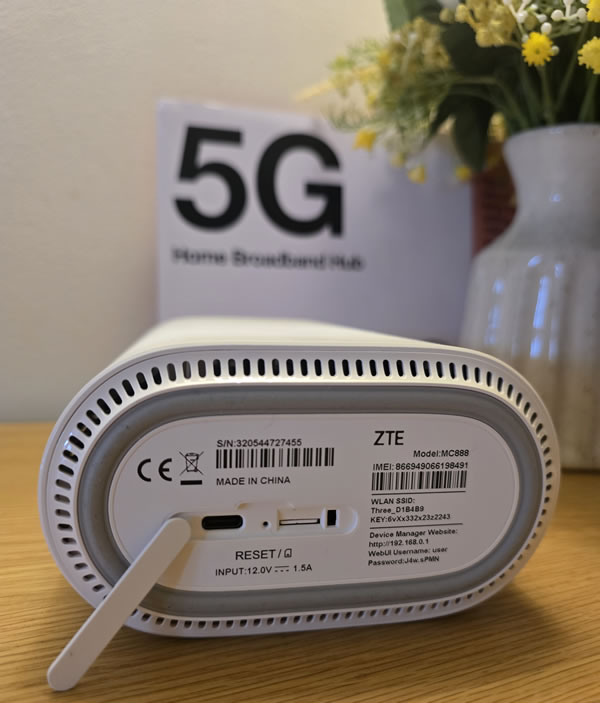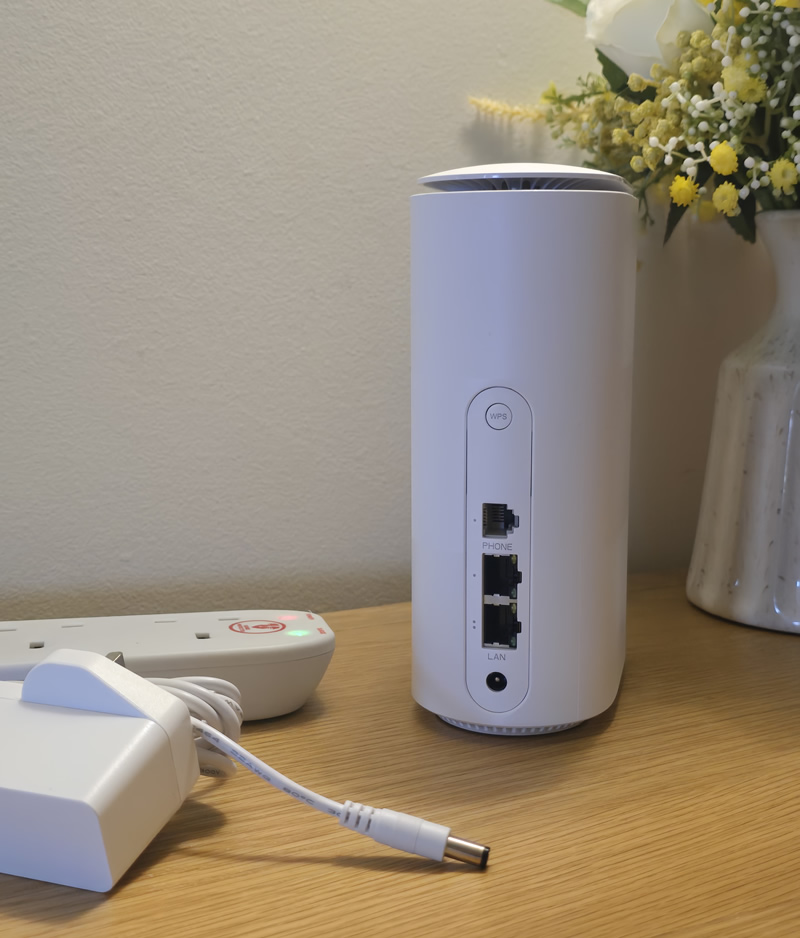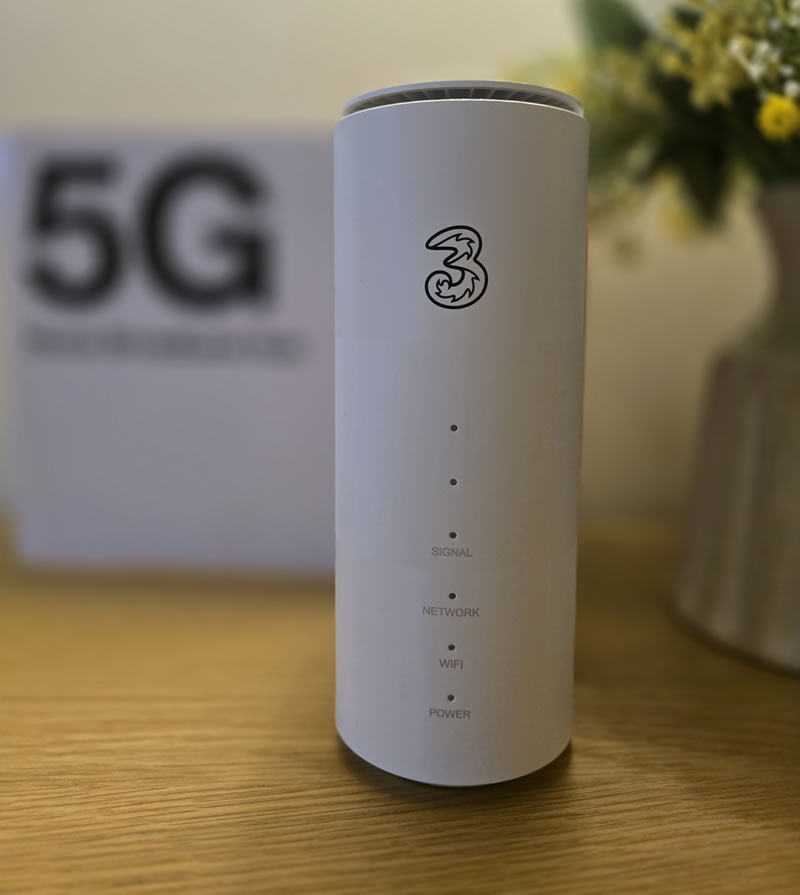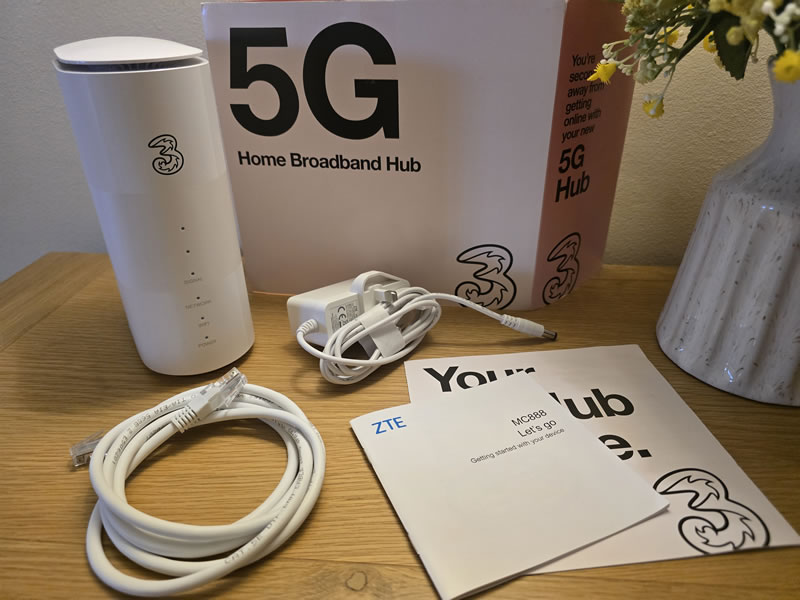Home broadband is one of the best uses for 5G, offering a number of potential advantages over fibre broadband, from lower costs and simpler setup to sometimes even higher speeds. As such, a number of mobile networks are already offering this service, with Three being among them.
And if you get 5G home broadband from Three, then you’ll be sent the Three 5G Hub – which at the time of writing is a rebranded ZTE MC888 – to use as a router.
So just how is the Three 5G Broadband? The short answer – as you can tell from the score on this review – is very good. For the long answer, read on.
How does the Three 5G Hub work?
The Three 5G Hub provides 5G home broadband to your home – so it’s a router that beams out a Wi-Fi network, like with fibre broadband, but unlike fibre you don’t need cables running into your home. Instead, the Hub picks up a mobile signal from a nearby mast.
Even those who really struggle with tech likely won’t have too much trouble getting the Three 5G Hub up and running, as there’s little that needs doing beyond plugging it in and turning it on, and there’s a quick start guide to run you through the basics.
That means you don’t need to wait (or pay) for an engineer to come and get it connected. And as it relies on a mobile network you also don’t need a landline for it – so if you’re not using your landline for calls, you could cancel it and save some money.
Being quick and easy to set up means you can have your internet online very soon after placing your order, as all you need to wait for is the Three 5G Hub to arrive in the mail. And the simplicity also means it’s just as easy to get up and running again in a new house or anywhere else with a power supply and 5G coverage. Of course, the viability of the Three 5G Hub does depend on you having mobile – and preferably 5G – coverage.
Setup
The Three 5G Hub is – like most 5G home broadband devices – very easy to set up, but we’ll run you through the full process below.
Step 1: prepare the SIM card
You’ll receive a SIM card with the Three 5G Hub and you need to insert this to get any internet connectivity. So, first remove the SIM card from its packaging. Three will have sent you a trio SIM, which contains every SIM card size, but it’s the smallest size that you want (called a Nano SIM).
Step 2: insert the SIM card

With the SIM card ready, look for a small flap on the bottom of the Three 5G Hub. If you lift this, you’ll see the SIM card slot, so put the SIM card in that, making sure that you push it in until you hear a quiet click sound. Then cover the slot again with the flap.
Step 3: power on
Next, plug one end of the power cable into the back of the Three 5G Hub and plug the other into a socket. We suggest choosing a socket that allows you to place the Three 5G Hub on a windowsill, so it has a clearer view of the nearest mast. Then press the power button on the back to power it on.
Step 4: let there be light(s)
Once you’ve switched the Three 5G Hub on, you’ll see indicator lights appear on the front. These include a power symbol, a signal indicator (which consists of three dots - with more lights meaning a stronger signal), a network type light (with a white light meaning 5G and blue meaning 4G), and a Wi-Fi light, indicating that the Hub is broadcasting a Wi-Fi network.
Step 5: get connected
With that done, the Three 5G Hub is ready to go, so just use the network name and password (found on the sticker on the back) to connect other devices in your home to the Wi-Fi network it’s now beaming out.
Performance and speeds
| Average | Maximum | Minimum | |
|---|---|---|---|
| Download (Mbps) | 419.6 | 633.5 | 122.7 |
| Upload (Mbps) | 18.3 | 36.1 | 11.8 |
| Latency (ms) | 29 | 34 | 26 |
The Three 5G Hub supports download speeds of up to 3.8Gbps and upload speeds of up to 250Mbps. Speeds which notably are far higher than you’re likely to get on any current 5G network. Indeed, Three claims that its network currently tops out at 1Gbps for downloads with this device – but at least that means it’s future-proofed.
It’s also more future-proofed than the previous generation of the Three 5G Hub, which topped out at lower speed.
In practice, average download speeds are more likely to be in the region of 150Mbps according to Three, but will vary a lot depending on the coverage where you are, and how the construction of your home affects signal.
In our own tests, we averaged significantly higher than that, with an average download speed of 419.6Mbps, as you can see in the chart above. Upload speeds averaged 18.3Mbps, and latency averaged 29ms.
Those download and latency figures are impressive, and our best results were even more so, with speeds topping out at 633.5Mbps, and latency dropping as low as 26ms (more than good enough for online gaming). The only figures that are less impressive are the upload speeds, which for us never exceeded 36.1Mbps in our tests. That’s fine, but nothing special.
For comparison though, average download speeds on 4G home broadband devices tend to come in at around 25Mbps, while upload speeds tend to be under 10Mbps, so this is a huge improvement on that.
These speeds are also much better than you’ll get with most fibre broadband, as typical fibre plans offer average download speeds of under 100Mbps. That said, some places are able to get speeds of 1Gbps or more – though that’s not widely available and tends to cost more than 5G broadband.
Router Features

There are a few notable features of the Three 5G Hub. For one thing, it can connect up to 64 devices to the internet at once. So you shouldn’t have any trouble getting all your phones, tablets, computers, consoles and the like online, and even if you have a very smart home with connected lights, televisions, thermostats and the like, you’re unlikely to hit the 64-device limit. That limit is also in line with the top rival devices (detailed further down).
The Three 5G Hub also supports both 2.4GHz and 5GHz Wi-Fi, and has two Ethernet ports, so whatever you want to get online and however you want to do it, the Three 5G Hub should have you covered.
Plus, it supports Wi-Fi 6. It doesn’t have any external antenna ports, but if you struggle to get a signal at home then you might want to consider the Three 5G Outdoor Hub instead, which is designed for tricky areas.
Plans
One of the best things about the Three 5G Broadband is how affordable it is, with prices starting at just £19 per month at the time of writing. That’s with unlimited data on a 24-month plan, and there’s no upfront cost.
You can alternatively get the Hub on a 30-day rolling plan for £28 per month. That’s again with unlimited data and no upfront cost.
Plus, Three offers a 30-day money back guarantee, so it’s a risk-free purchase even if you’re not sure it’s the right product for you.
We’ll look more in depth at some alternatives below, but purely from a cost perspective the Three 5G Hub has most other options beat. Other 5G home broadband options can cost more than twice as much per month, and full fibre broadband (which is the only way you’ll get comparable speeds with a fibre connection) also typically costs a lot more.
Alternatives
Vodafone GigaCube 5G
One of the main alternatives to the Three 5G Hub is the Vodafone GigaCube 5G.
This is a largely similar device to the Three 5G Hub, but it has a lower maximum download speed of 2.8Gbps – though likely similar real-word speeds. It does still support 64 simultaneous connections though.
EE Smart 5G Hub
The EE Smart 5G Hub is also one of the Three 5G Hub’s main rivals. This has two Ethernet ports, average speeds of 146Mbps, and can get over 100 devices online.
The biggest consideration with both this and the Vodafone alternative then will be whether they offer 5G coverage in your home (which you’ll have to check for yourself) and price.
On the price front, Three often undercuts rivals, and you can see the latest deals on the Three 5G Hub at the top of this article.
Three 5G Outdoor Hub
The Three 5G Outdoor Hub is the solution for you if you only have a weak 5G signal at home, and may be an option even if you don’t think you get a 5G signal at all.
This is – as the name suggests – installed outside your property, where it has a better chance of picking up signals. It still doesn’t require an engineer visit though in most cases.
It’s then paired with an Eero 6 router inside your home, and as with the Three 5G Hub, average download speeds should be around 150Mbps.
Three 4G Hub
If you’re set on Three but don’t have 5G coverage in your home, then another option is the Three 4G Hub. This is also a home broadband router, but it only offers 4G rather than 5G.
That means speeds are much lower, topping out in theory at 600Mbps but averaging under 100Mbps, and potentially much under depending on coverage in your area.
It supports 64 simultaneous connections though, and has four Ethernet ports – which is twice as many ports as the Three 5G Hub.
Fibre broadband
Of course, perhaps the most obvious alternative to the Three 5G Hub is a fibre broadband connection, as that’s the standard form of home internet.
There are lots of options here, with most companies offering unlimited plans. Speeds though vary a lot, and a lot of plans average well under 100Mbps. For example, Plusnet’s standard fibre broadband tops out at 72Mbps, and similarly BT Broadband offers fibre speeds ranging between 35Mbps to 73Mbps in most cases.
Both companies also offer full fibre plans with speeds of 900Mbps or more, but these aren’t widely available, and full fibre plans are often expensive. You also need an engineer to install fibre broadband, and some plans require a landline too.
Conclusion
Three 5G Broadband is an excellent alternative to fibre broadband, with high speeds, tech to help you maximise its performance, and relatively affordable prices. It's also simple to setup, you can take it anywhere with a power-outlet, and you don't need to pay for a landline.
As key rivals offer comparable devices, the actual hardware doesn’t stand out much, but Three’s plans do. Ultimately though, coverage will be the single biggest factor for many people right now, as 5G coverage still isn’t comprehensive on any network, so you might simply have to opt for the network that has a signal where you live. However, Three offer a 30-day money back guarantee, so if you aren’t happy, you can return it stress-free.












